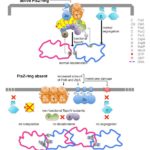Monthly Archives:June 2017
The capillary web gets lost in diseased kidneys
Time is Brain. Rupture of a brain aneurysm and the patients journey to the neurosurgical center
In brain infarction or traumatic injuries of the brain an immediate admission to a neurosurgical / neurological center can be life saving. With brain hemorrhages caused by a ruptured aneurysm the situation is not as clear. First
Mechanisms of diuretic plants: an overview
New strategy for the degradation of persistent pollutants in water
A covert authentication and security solution for GMOs
Significantly increasing worldwide utilization of genetically modified organisms (GMOs) presents challenges to ensure security, authenticity and validation of material goods and legal agreements. Similarly to the evolution witnessed in Internet protocols, strategic focus is required to anticipate,























